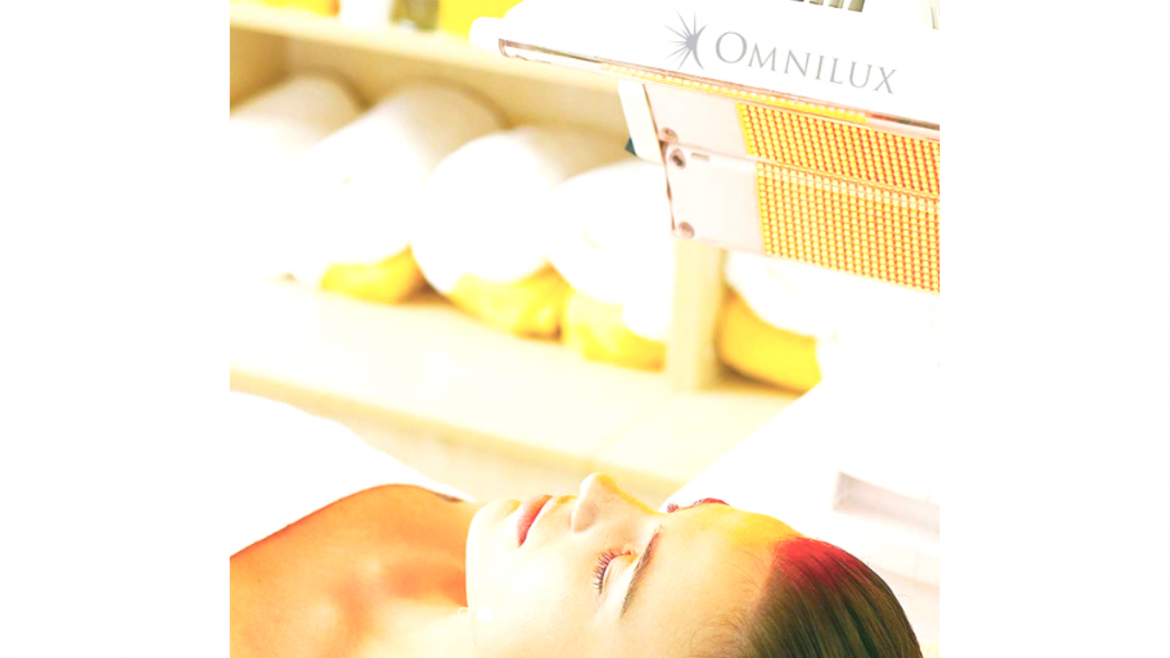Living in a fast-paced digital age, it is vital to manage stress and anxiety to lead a healthy life. Though technological advancements have made life easier, they have also overflown us with constant information, leaving us depleted and panicky. However, this can be tackled with mindfulness, which trains us to be aware of the present moment without judgment. Exercise, a balanced diet, and ample sleep help maintain good health and reduce anxiety. Social media can be both a boon and a bane; regulating screen time and curating feeds can reduce anxiety. It’s essential not to overlook loved ones’ support and self-care, indulging in hobbies to recharge the mind and body. By incorporating such practices in everyday life, a peaceful existence in this digital age is possible.
The integration of technology in our daily lives
Technology has become an integral part of our daily lives, from the moment we wake up to the time we go to bed. From mobile devices to computers and the Internet, technology is used for communication, work, education, entertainment, and more. The advancements in technology have undoubtedly made our daily tasks easier and more efficient. However, with its ubiquity comes concerns about its impact on our well-being. Excessive and mismanaged use can lead to addiction, social disconnection, sleep disturbances, and other negative effects on our mental and physical health. Therefore, it is crucial to find a balance between technology usage and wellness to optimize our overall quality of life.
The potential negative impacts of technology on our well-being
While technology has revolutionized the way we live and work, it has also led to some negative impacts on our well-being. The overuse and misuse of technology can impact our physical and mental health, including sleep deprivation, eye strain, headaches, and increased stress and anxiety. Social media use has been linked to loneliness, depression, and diminished self-esteem, particularly among younger generations. When technology becomes an obsession, it can lead to a lack of physical activity, poor nutrition, and neglect of important relationships. It’s important to recognize and address technology’s negative impacts and make efforts to manage its use to preserve our wellness and quality of life.
Negative effects of technology addiction on our mental health
Studies have shown that technology overuse can negatively affect the brain’s frontal cortex, leading to altered brain structure and function. Symptoms of technology addiction can include irritability, anxiety, isolation, and depression. This could lead to a decrease in in-person social interactions, potentially leading to social anxiety and difficulties communicating. Addiction to social media, online gaming, and other technology can also worsen existing conditions like depression, bipolar disorder, or anxiety disorder. Therefore, it’s necessary to identify the effects and take appropriate steps to address technology addiction for better mental health.
The link between social media use and anxiety and depression
The link between social media use and anxiety and depression has been a topic of concern in recent years. The constant notifications, updates, and the fear of missing out on something worthwhile can trigger anxiety and stress in social media users. Studies suggest that social comparison and the pressure to present a perfect life on social media can lead to unrealistic expectations and negative self-image, which can exacerbate anxiety and depression. Additionally, social media may create feelings of loneliness and social isolation, leading to feelings of depression. While social media can be an incredible tool for staying connected with friends and family, monitoring and limiting its use can have significant benefits for mental health. It could include limiting its access or setting time limits for social media usage or cultivating healthy off-screen activities and time with loved ones.
The effects of technology on sleep and physical health
Technology use can have adverse effects on sleep quality, quantity, and overall health. Blue light emitted from electronic devices signals the brain to limit the production of the sleep-inducing hormone, melatonin, resulting in disrupted sleep patterns.
Disruptive sleep patterns can have significant negative impacts on our physical and mental health. Prolonged sleep deprivation or disruption can lead to fatigue, decreased cognitive function, irritability, and mood swings. It can also impact our body’s immune system and increase the risk of developing chronic health conditions. For instance, inadequate sleep has been linked to an increased risk of developing high blood pressure, heart disease, diabetes, and obesity.
If you are the kind of person who has disrupted sleep patterns and experience heightened stress levels you are at a greater risk of developing depression and anxiety disorders. Disrupted sleep patterns can also affect productivity and performance at work, education, or other tasks requiring focus and sustained attention.
A lack of good quality sleep can affect our body’s natural hormonal balance, leading to hormonal imbalances, weight gain, and metabolic disorders.
To maintain good health, it is crucial to aim for 7-9 hours of consistent, quality sleep every night. Creating a conducive sleeping environment, establishing a regular sleep schedule, avoiding caffeine and alcohol before bedtime, and engaging in relaxation practices such as meditation or deep breathing exercises can all help promote a restful night’s sleep.
The consistent use of digital devices, particularly before bedtime, can lead to insufficient sleep, daytime fatigue, and drowsiness. Sitting for extended periods while engaging in screen time can lead to a sedentary lifestyle, contributing to health issues like obesity, heart disease, and high blood pressure. Taking breaks and stretching during prolonged screen use can improve physical health and cognitive function. It is essential to implement healthy screen habits like reducing screen time before sleeping, maintaining good posture while using digital devices, and taking breaks to counter technology’s negative physical effects.
Practical strategies for balancing wellness with technology use
Mindfulness practices to reduce screen time and promote self-awareness
Practicing mindfulness can be an effective way to reduce screen time while promoting self-awareness. Mindfulness involves being present and aware of our thoughts, feelings, and surroundings without judgment or distraction. Incorporating mindfulness practices into our daily routines, such as meditation, yoga, or deep breathing exercises, can help us become more intentional and less impulsive when it comes to screen use. When we are mindful, we are more likely to recognize and address triggers that lead to excessive screen time, such as boredom or stress, and make healthier choices instead. I use a practice called heart math.
HeartMath is a research and training program founded in 1991 by research scientists and educators. The goal of HeartMath is to show people how to harness the power of the heart-brain connection to improve health and well-being. The technique is based on the idea that the heart is not just a pump but a part of the body’s regulatory system and that the human heart emits an electromagnetic field that can be measured and used for various purposes. One key HeartMath concept is coherence, which is achieved when the heart rate, breathing, and other physiological functions become harmonized and synchronized. There are several tools and techniques available in the HeartMath program, including heart rate variability biofeedback, stress reduction techniques, and emotional regulation methods, all aimed to help individuals to improve their overall wellness.
Create technology-free zones and routines.
Here are some ideas for creating technology-free zones and routines:
- Bedroom: Make your bedroom a technology-free zone and leave all your devices outside the bedroom. Invest in an alarm clock and a good book to read instead.
- Meals: Turn off your TV, put down your phone, and have technology-free meals with your family or friends. Use this time to connect and engage in meaningful conversations.
- Commute: Try to avoid checking your phone or emails during your commute. Instead, listen to music, read a book or enjoy the scenery.
- Work breaks: Take regular breaks from your computer or phone during the workday. Use this time to stretch, take a walk, or chat with colleagues.
- Outdoor activities: Plan outdoor activities with friends and family such as hiking, biking, or canoeing. Leave the technology behind, and enjoy spending quality time reconnecting with nature.
- Nighttime Routine: Set a technology curfew for yourself, say an hour before bedtime, that you will stop using all digital devices. Use this time to unwind, read a book, or meditate instead.
Remember, creating technology-free zones and routines is all about reducing daily technology use and creating space for connections with our surroundings and loved ones.
Implementing self-care practices to promote physical health
Chinese medicine offers several self-care practices to promote physical health. Here are some tips to get started with Chinese medicine:
- Qi Gong: Qi Gong is a practice that involves gentle movements, deep breathing, and meditation to promote physical health, improve circulation, and reduce stress. Joining a local Qi Gong group or watching online tutorials can be a great way to learn.
- Acupuncture: Acupuncture involves inserting thin needles into certain pressure points on the body to promote the body’s natural healing process and reduce pain, inflammation, and other physical ailments. Seeking treatments from a trained acupuncture practitioner can help alleviate physical pain and promote overall health.
- Herbal remedies: Certain herbs can be used to promote physical health and alleviate ailments. Some commonly used herbs in Chinese medicine include ginger, ginseng, chamomile, and Echinacea. Consulting with a trained practitioner to determine the best herbs for your needs is recommended.
- Diet: In Chinese medicine, diet plays a crucial role in promoting physical health. Balancing the five elements on the plate, eating whole foods with seasonal ingredients, and cooking methods such as steaming and stir-frying can be incorporated into your diet.
- Mindful walking: Walking meditation is a valuable practice in Chinese medicine. It involves taking a stroll while being aware of one’s surroundings, breathing, and sensations, which has a positive effect on physical health and overall wellness.
It is important to note that self-care practices of Chinese medicine should be implemented with the help of a qualified Chinese medicine practitioner or under their supervision. Taking these steps to implement self-care practices rooted in Chinese medicine can help improve physical health, overall wellness, and help prevent health problems in the future.
While technology has significantly impacted our daily lives, it is important to recognize the negative effects it can have on our overall wellness and health. Implementing mindful practices, self-care routines, and healthy screen habits can significantly reduce stress, anxiety, and depression associated with excessive technology use. By regulating the use of technology and incorporating physical activity, healthy food choices, ample sleep, and stress-management techniques, we can enjoy the benefits that technology provides while also maintaining a healthy and balanced lifestyle.





